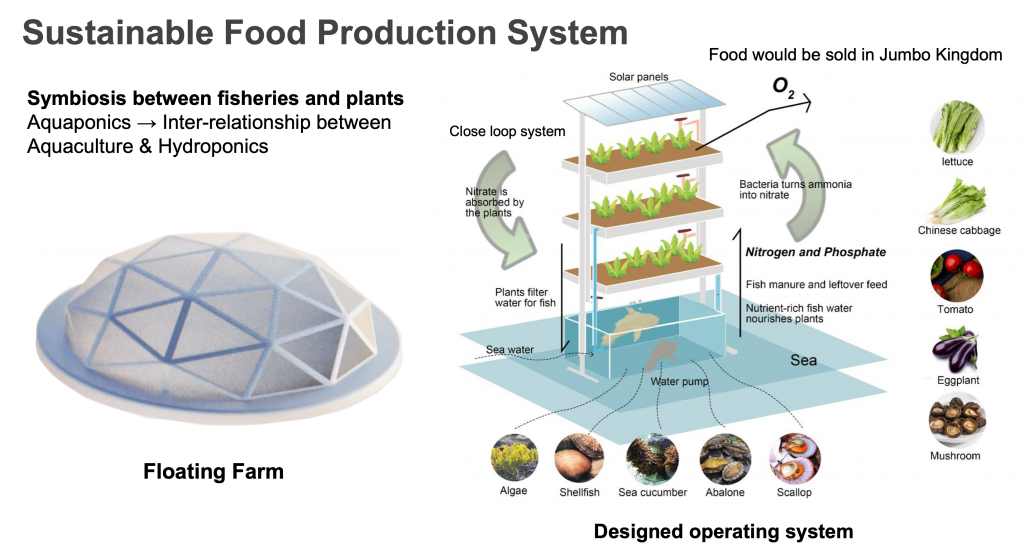Jiahao Li, Ka Ching Lau, Michael Just,
Pramada Jagtap, Shutong Zhu, Soad Mana
We present our project “Symbioponics”, a hybrid title referring to “symbiosis” and the Greek “ponics” as a technics or method of labour. We propose floating farms off the Wong Chuk Hang coast just outside of the Typhoon shelter. Based on hydro- and aeroponics, the farms supply the local population with fresh vegetables. Leveraging the advantages of the offshore location, the farms are largely automated and operated by AI-equipped agricultural drones which supervise the farming and harvest and deliver the crop. In a proposed collaboration with Ocean Park, we reactivate the Jumbo Floating Restaurant as a market and community-based hub in which humans, plants and machines participate equally.
We focus on sustainable, local food production. At first, we examined the built environment of Wong Chuk Hang in terms of its potential for urban farming and the activation of underutilized spaces. Then it became clear that this space was right in front of us: the coast as a specific context that refers to the cultural history of Island South, such as the houseboats of the fishermen and Jumbo Kingdom. We were thus able to connect the water and the land, circumnavigating the ubiquitous scarcity of space in Hong Kong while opening up possibilities for innovation, production and new social relationships and cross-species interaction.
There are many aspects to consider in terms on technological innovation. One of the most interesting to us is the question concerning automation through drones. One of the major advantages of the sea over the city is the feasibility of widespread drone usage. Agricultural drone technology, for instance as provided by XAG, Guangzhou, is already being implemented. Yet our approach implies complex drone interaction and collaboration. The automated process of farming and harvesting requires a merging of drones and robotics, and it is furthermore based on extensive image-recognition technology so as to classify the plants and implement respective protocols of action. We think that this concept is viable, yet the technology in support of it will have to be highly customized and, in part, will have yet to be developed.


